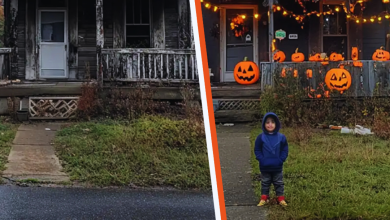Road markings play a crucial role in ensuring safe travel and guiding drivers to their destinations. Ignoring these markings can lead to accidents or worse, underscoring their importance in our daily commutes. Recently, residents of some communities may notice a new addition to roadway markings—a thin blue line painted between the center lines on certain roads.
In many cities across the globe, a blue line painted on the street indicates a designated area for emergency services, particularly for fire department vehicles. This practice helps ensure that fire trucks and other emergency responders can access critical locations quickly and without obstruction.
The blue line is usually found near fire hydrants or along routes frequently used by emergency vehicles.

In Maryland, this blue line is being introduced as a tribute to the heroic police officers who serve and protect their communities. This simple yet meaningful gesture aims to show appreciation for these brave individuals.
The blue line not only serves as a symbol of respect but also functions as a practical safety measure. In an emergency, the line guides individuals directly to the nearest police station, offering a clear path to help when needed.
The initiative, while seemingly small, has significant implications for community relations. In places like Ocean City, Maryland, where the blue line has recently been added, it reflects the town’s support for its officers. Mayor Rick Sheehan expressed his satisfaction with the addition, noting that the line on Ocean City’s 65th Street leads directly to the Ocean City Police Department headquarters. This gesture aims to make both residents and tourists aware of the vital role police officers play in maintaining order and safety in the area.
The blue line also resonates with the concept of the “Thin Blue Line,” a term popularized by the 1988 documentary of the same name by Errol Morris.







